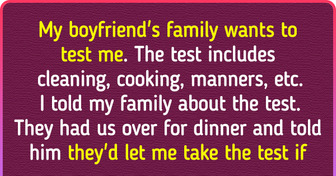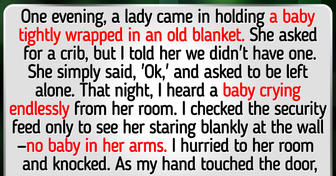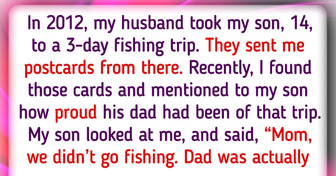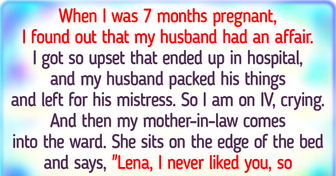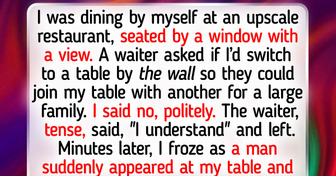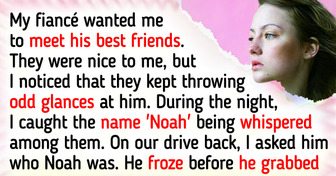16 Strangers Who Walked Into Someone’s Day and Made It Anything but Ordinary
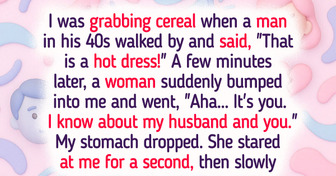
You check under the sofa. Nope. You open the cupboard. Not there. You lie down on the floor and sneak a peek under your bed. Nah. No kitties there, just dust bunnies. Then, where’s your cat?! Oh no, could that crazy pet slip out through the back door?
A wave of panic overwhelms you, and you bolt outside. Your backyard, once green and blooming, is now covered with a thick layer of rock-hard asphalt. Several large fake plants in pots make the dull landscape somewhat more upbeat.
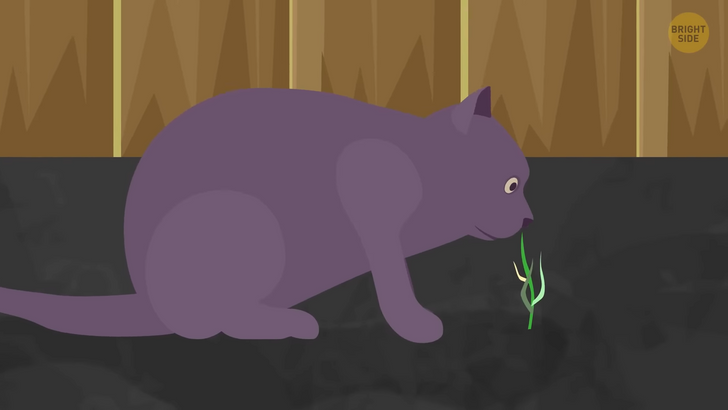
Anyway, where’s that cat of yours? Oh no, just as you feared — your kitty spotted something on the ground and is now playing with it. You get closer. Incredible! A tiny green sprout has broken through the asphalt.
But it means your cat is in grave danger! Because these days, plants are more treacherous than bears, crocodiles, or even sharks. Until a couple of years ago, most people knew next to nothing about carnivorous plants.
If you had asked an expert, though, they would have excitedly submerged you in a sea of information. Meat-eating plants used to munch on tiny creatures — mostly insects, frogs, more rarely a mouse or rat. That is, until recently. But I’m getting ahead of myself. Back when days were good, there were just about 700 kinds of carnivorous plants on the planet. They grew all over the world, except Antarctica. Nobody likes Antarctica except penguins.
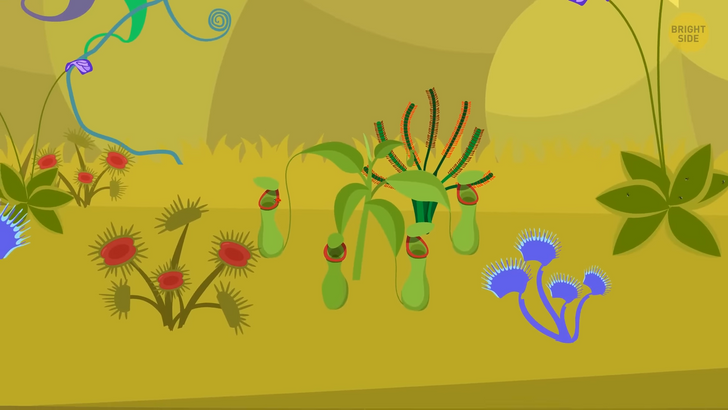
Even before the disaster, people kept discovering new species of meat-eating plants. Some of them were in the process of becoming carnivorous. Those had their leaves coated with wax. A bug landed on it and slipped right into the plant’s water-filled pitcher.
Some carnivorous plants wooed insects not only to snack on them. Some flying critters were needed to spread the plants’ pollen. That’s one of the reasons meat-eating plants had (and still have) bright colorful flowers.
These blooms were high above the treacherous leaves — as far away from the traps as possible. This way, pollinators didn’t get eaten before they helped the plant to reproduce. Good old plants got most of their food by basking in the sun. But it wasn’t enough — they also needed nutrients, which they slurped up with their roots. But carnivorous plants lived in areas with nutrient-poor soil.
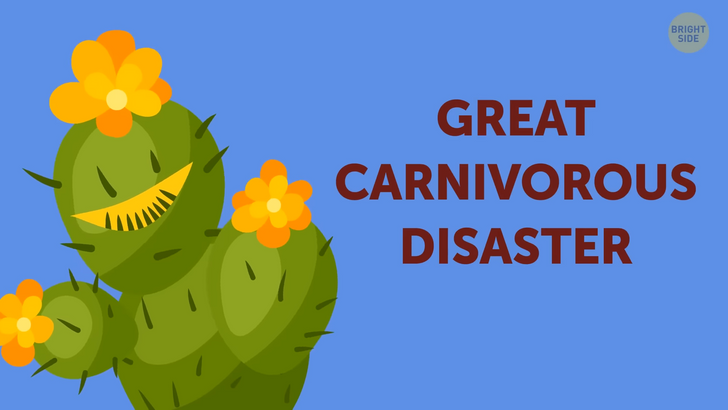
That’s why they started to catch prey. Such a high-protein diet helped them survive and grow faster. Some meat-eating plants didn’t even have special digestive enzymes. They used to partner up with “good” bacteria. And while those bacteria took care of prey, the plant itself concentrated on making its physical trap stronger.
Little did we know at that time that soon, life would change beyond recognition. That we would need all the available information about the planet’s flora. Because when a scientific experiment went way out of control, all plants on Earth (and I do mean ALL) became carnivorous!
The event even got the name of the Great Carnivorous Disaster. Slowly but surely, grass, trees, and bushes started to transform. Not all of them grew bigger. But some did. Plus, each plant species picked its own way to catch its prey.
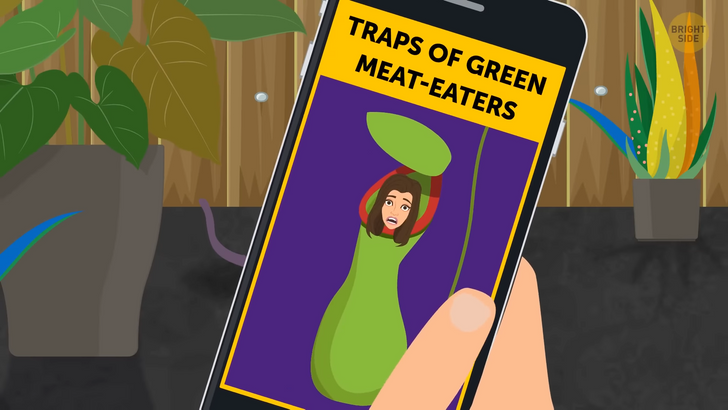
You cautiously come closer to the spot where your cat keeps playing with an innocent-looking tree sprout. Even though you know the plant is still weak and isn’t likely to harm your pet, the sight makes you shudder. You have to figure out which kind of plant it is. Green meat-eaters use a bunch of different methods to catch their prey. Those are pit-shaped and snap traps, sticky goo, flypaper traps, and many others.
Still, all of them involve modified leaves. The plant you’re currently looking at uses sticky tentacles to get its food. If these tentacles were motionless, sunlight would glint off them, attracting insects. But this plant is a proud owner of moving tentacles — and right now, you watch them wrap around your kitty’s tail!
You put on a glove you now always keep in your back pocket. Desperate times call for desperate measures. Then, you gently and carefully pry the surprisingly strong tentacle open.
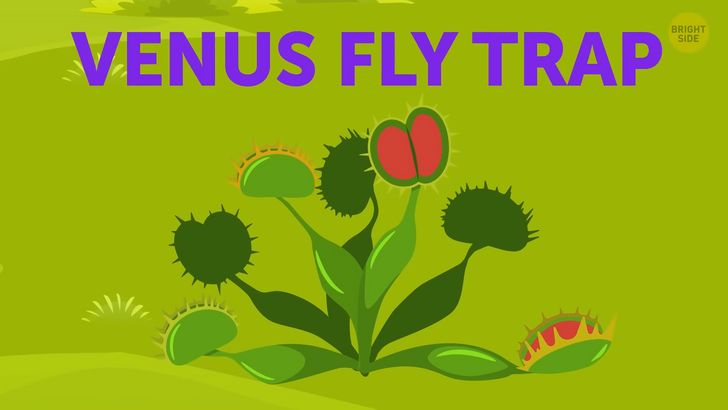
The plant doesn’t seem to be poisonous, but still. You can’t but feel relieved it’s not a snap-trap one. Those take after the iconic meat-eater Venus Fly Trap. Their leaves are divided in half. On the ends, they have spikes that create a seal.
Once an insect or, these days, an animal, makes its way in between the serrated leaves, they snap shut. The whole process takes less than a second! This is the most treacherous kind of carnivorous plant. Snap-trap plants have leaves covered with short, stiff hairs.
They’re called sensitive or trigger hairs. If something — or someone — touches them, the trap springs into action. The plant produces digestive juices — similar to those in your stomach. In five to twelve days, there’s almost nothing left from the prey. The trap reopens, and the scarce remains get washed away by rain.
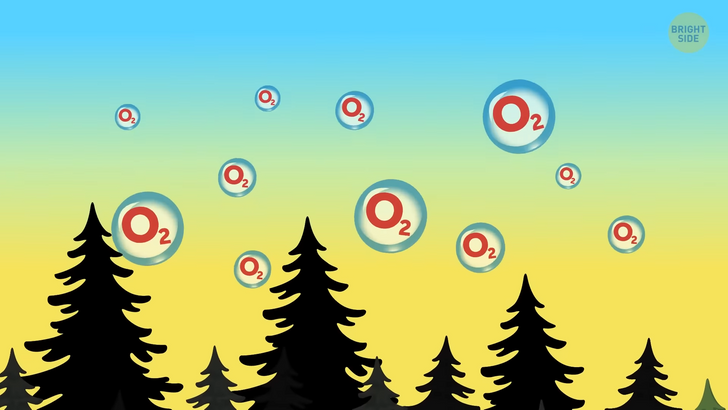
These days, people can’t feel safe even underwater. Now, all seaweed, every single blade of grass can’t wait to munch on your finger. Life has dramatically changed in many ways. The construction of new roads and highways that were supposed to go through forests needs much more preparation, safety measures, and more advanced tools.
On the plus side, the planet has more oxygen than ever before. People have started to adjust their lifestyles to the new reality. We no more jog in the park, cycle, swim in open water and enjoy other outdoor activities. Gyms, swimming pools, and takeout restaurants have become super-popular. The Great Carnivorous Disaster has changed people’s diets. Growing good old veggies isn’t an easy feat these days.
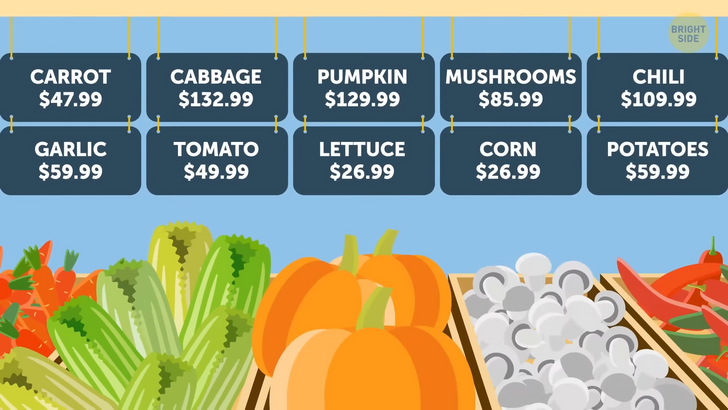
Potatoes, carrots, broccoli — you name it — have become a rare delicacy. People don’t walk anymore. You never know which tree or bush on your way might attack you because you look delicious enough to lunch on. That’s why there’s an ever-increasing demand for cars. All flower shops have gone out of business. The lovely floral arrangements had a nasty habit of eating the customers.
Weddings certainly changed. The simple custom of throwing the bride’s bouquet to the bridesmaids changed to imply an attempt on someone’s life. Here, catch! Unfortunately, many animals have gone extinct. Mostly the slower ones. Those animals that have survived the Disaster are either evolving to live alongside carnivorous plants or skedaddling to safer areas.
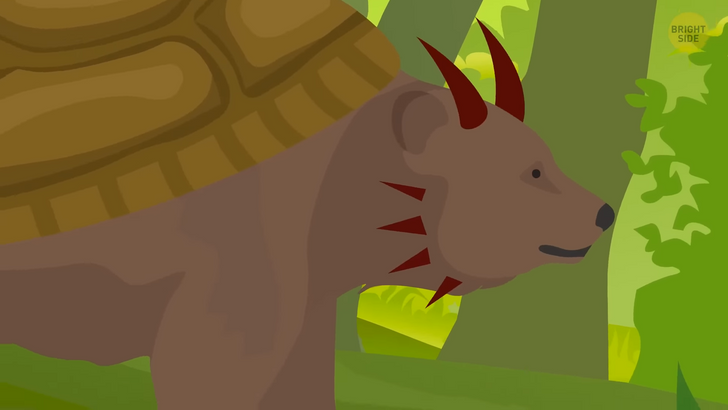
Lots of animals that used to live in the wild are now moving closer to towns and cities. By the way, the safest — and most popular — places to settle down nowadays are deserts. Despite a lack of water and supermarkets, more and more people build houses and relocate there. And people who opt for living in a desert don’t mind walking around a cactus or two on their way to the car. Even though some of these cacti have learned to detect prey and shoot at it with their needles.
(It’s still unclear how they get to the fallen prey afterward. They can’t crawl, can they?!) There are still original meat-eating plants here, but they’ve evolved to be much stronger and larger. In any case, people are still learning to live in this new world of meat-eating plants. Boy, what I wouldn’t give for a really good herbicide right now.

